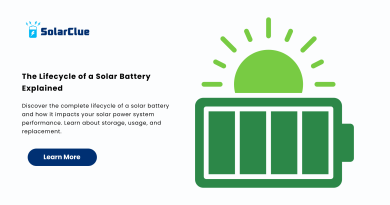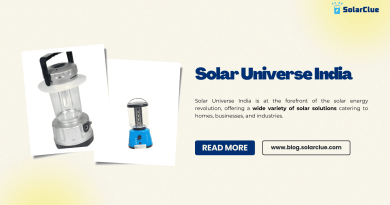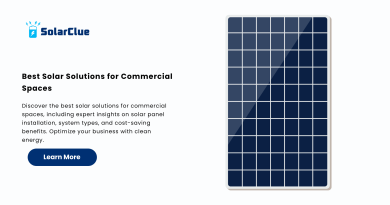Do It Yourself Solar Panel Kits
DIY solar panel kits offer an accessible way for homeowners to harness solar energy without the need for professional installation. This guide provides an in-depth look at the benefits and drawbacks of DIY solar systems, the components typically included in these kits, and the tools and equipment required. We’ll also provide a step-by-step installation guide, safety precautions, troubleshooting tips, and insights into the challenges and limitations of DIY solar panel kits.
Table of Contents
- 1 The Benefits and Drawbacks of DIY Solar Panel Kits
- 1.1 Typical Components of a DIY Solar Panel Kit
- 1.2 Tools and Equipment Needed for Installation
- 1.3 Step-by-Step Installation Guide
- 1.4 Safety Precautions and Troubleshooting Tips
- 1.5 Potential Challenges and Limitations
- 1.6 Comparing DIY Kits to Professional Installation
- 1.7 Legal and Regulatory Considerations
- 1.8 The Future of DIY Solar Panel Kits
- 1.9 Case Studies of Successful DIY Solar Panel Installations
- 1.10 Comparing DIY Solar Kits to Professional Installation
- 1.11 Conclusion
- 1.12 FAQ Section
The Benefits and Drawbacks of DIY Solar Panel Kits
Benefits:
Cost Savings: One of the main attractions of DIY solar panel kits is the potential to save money on installation costs. By installing the system yourself, you can avoid the labor fees associated with professional installation.
Learning Experience: Building your own solar system can be an educational experience, offering a deeper understanding of how solar energy works.
Customization: DIY kits allow you to tailor the system to your specific needs and preferences.
Drawbacks:
Technical Expertise Required: Installing a solar system requires a certain level of technical knowledge and electrical skills. Mistakes can lead to inefficient energy production or safety hazards.
Time-Consuming: DIY installation can be time-consuming, especially for those unfamiliar with the process.
Limited Support: DIY installers may have limited access to customer support or warranties, compared to systems installed by professionals.
Components Included in Typical Kits
Solar Panels:
- Description: The most critical component, solar panels convert sunlight into electricity. Kits typically include multiple panels, depending on the desired system size.
Inverter:
- Function: The inverter converts the direct current (DC) generated by the panels into alternating current (AC), which is used by most household appliances.
Mounting Hardware:
- Purpose: Mounting racks, rails, and brackets secure the panels to the roof or ground.
Charge Controller:
- Role: Regulates the voltage and current coming from the panels to the battery (if a battery is included), preventing overcharging.
Wiring and Connectors:
- Usage: Wires, connectors, and junction boxes connect the system components and route electricity where it’s needed.
Batteries (Optional):
- Storage: Batteries store excess energy generated during the day for use during the night or on cloudy days.
Typical Components of a DIY Solar Panel Kit
| Component | Function |
|---|---|
| Solar Panels | Convert sunlight into electricity |
| Inverter | Converts DC power to AC power for household use |
| Mounting Hardware | Secures panels to the roof or ground |
| Charge Controller | Regulates power flow to batteries (if included) |
| Wiring and Connectors | Connects system components and routes electricity |
| Batteries (Optional) | Stores excess energy for later use |
Tools and Equipment Needed for Installation
Basic Tools:
- Screwdrivers and Wrenches: For securing panels and mounting hardware.
- Wire Strippers and Crimping Tools: Necessary for wiring connections.
- Drill: To make holes for mounting hardware.
Electrical Tools:
- Multimeter: Used to measure voltage, current, and resistance to ensure connections are correct.
- Conduit Bender: For bending electrical conduits.
Safety Gear:
- Gloves and Safety Glasses: Protect hands and eyes during installation.
- Harness: If installing on a roof, a safety harness is essential to prevent falls.
Step-by-Step Installation Guide
1. Site Assessment:
Choose Location: Identify the best location for your panels, typically a south-facing roof or an open ground area with maximum sunlight exposure.
Shade Analysis: Ensure the location is free from shading throughout the day.
2. Mounting the Panels:
Install Mounting Hardware: Secure the mounting hardware to the roof or ground according to the manufacturer’s instructions.
Attach Panels: Place the panels onto the mounting hardware and secure them tightly.
3. Wiring the System:
Connect Panels: Use the provided wiring and connectors to link the solar panels together.
Inverter Connection: Route the DC wiring from the panels to the inverter, ensuring correct polarity.
4. Installing the Inverter and Charge Controller:
Mount Inverter: Secure the inverter in a dry, ventilated location.
Connect to Grid or Battery: Connect the inverter to the grid or battery storage system as per the instructions.
5. Testing and Commissioning:
Check Connections: Use a multimeter to verify all electrical connections are correct.
Turn On System: Power up the system and monitor the inverter for correct operation.
6. Final Checks:
Inspection: Ensure that all components are securely mounted and that there are no loose wires.
System Monitoring: Use the inverter’s monitoring system to check the system’s performance.
Safety Precautions and Troubleshooting Tips
Safety Precautions:
- Electrical Safety: Always turn off the power before working on the electrical components to avoid electric shock.
- Roof Safety: If working on a roof, use a safety harness and ensure the ladder is secure.
- Weather Considerations: Avoid installing during rain or high winds to prevent accidents.
Troubleshooting Tips:
- No Power Output: Check all wiring connections and ensure the inverter is properly connected and turned on.
- Low Power Output: Inspect the panels for shading, dirt, or debris, and clean them if necessary.
- Inverter Issues: If the inverter shows an error, consult the manual or contact the manufacturer for support.
Potential Challenges and Limitations
System Sizing:
- Correct Sizing: Ensuring that the system is correctly sized for your energy needs can be challenging without professional guidance.
Permitting and Regulations:
- Local Codes: Navigating local building codes and obtaining necessary permits can be complex.
Grid Connection:
- Utility Approval: Connecting your system to the grid may require approval from your utility company, which can involve additional paperwork and inspections.
Comparing DIY Kits to Professional Installation
Cost Comparison:
- DIY Savings: DIY kits are generally cheaper due to the elimination of labor costs.
- Professional Benefits: Professional installation may offer better warranties, support, and a guarantee that the system meets local codes.
Time Investment:
- DIY Time: Installing a DIY system requires a significant time commitment, especially for those unfamiliar with the process.
- Professional Efficiency: Professionals can complete the installation more quickly, with less risk of errors.
Legal and Regulatory Considerations
Permits:
- Required Permits: Most localities require permits for solar installations. Check with your local building authority before starting your project.
Grid Connection:
- Interconnection Agreement: An interconnection agreement with your utility company may be necessary if you plan to connect your system to the grid.
The Future of DIY Solar Panel Kits
Technological Advances:
- Smarter Kits: Future DIY kits may include more advanced, plug-and-play components, making installation even easier for the average homeowner.
- Better Support: Companies may offer enhanced customer support, including virtual assistance and detailed video guides.
Market Growth:
- Increasing Demand: As the cost of solar panels continues to decline and more homeowners seek energy independence, the market for DIY solar kits is expected to grow.
Case Studies of Successful DIY Solar Panel Installations
Case Study 1: Suburban Home:
- Location: New York, USA
- System: 4 kW DIY solar panel kit
- Outcome: The homeowner successfully installed the system over two weekends, leading to significant energy savings and increased property value.
Case Study 2: Rural Off-Grid Cabin:
- Location: Colorado, USA
- System: 2 kW off-grid DIY solar kit with battery storage
- Outcome: The off-grid system provided reliable power for a remote cabin, allowing for year-round occupancy without reliance on external electricity sources.
Comparing DIY Solar Kits to Professional Installation
| Aspect | DIY Solar Kits | Professional Installation |
|---|---|---|
| Cost | Lower upfront cost, no labor fees | Higher cost due to labor and possibly better quality components |
| Installation Time | Time-consuming, especially for beginners | Faster installation by experienced professionals |
| Technical Skill Required | Moderate to high, depending on kit complexity | Minimal skill required by the homeowner |
| Support and Warranty | Limited support, warranties may vary | Comprehensive support and longer warranties |
| Permitting and Grid Connection | Homeowner responsibility | Handled by professionals, ensuring compliance |
Conclusion
DIY solar panel kits offer an exciting opportunity for homeowners to generate their own clean energy while saving on installation costs. However, these kits come with challenges that require careful consideration, technical skill, and a commitment to safety. By understanding the components, following a detailed installation guide, and addressing potential challenges, you can successfully install a solar panel system that meets your energy needs and maximizes your investment. This comprehensive guide provides the tools and knowledge to help you achieve a successful DIY solar installation.
Here at SolarClue®, we offer a smart, practical, and “beautiful” solution. You will be answered for all the questions related to Solar.
We provide all kinds of brands that are the Best Solar panels in India.
If you are the one who is planning for the solar power system. Don’t hesitate to contact our team!
Looking forward to empowering you with solar energy, just like hundreds of our other clients!
FAQ Section
1. What are the main benefits of a DIY solar panel kit?
The main benefits include cost savings, the opportunity for a hands-on learning experience, and the ability to customize the system to your specific needs.
2. What are the essential tools needed for installing a DIY solar panel kit?
Essential tools include screwdrivers, wrenches, a drill, wire strippers, a multimeter, and safety gear like gloves and a harness.
3. Are there any risks associated with installing a DIY solar panel kit?
Yes, risks include potential electrical hazards, roof damage during installation, and the possibility of voiding warranties if not installed correctly.
4. Can I connect my DIY solar system to the grid?
Yes, but it typically requires an interconnection agreement with your utility company and compliance with local codes and regulations.
5. How do I troubleshoot my DIY solar panel system if it’s not working correctly?
Start by checking all wiring connections, ensuring the inverter is properly connected, and inspecting the panels for any shading or damage. Use a multimeter to test voltage output.



